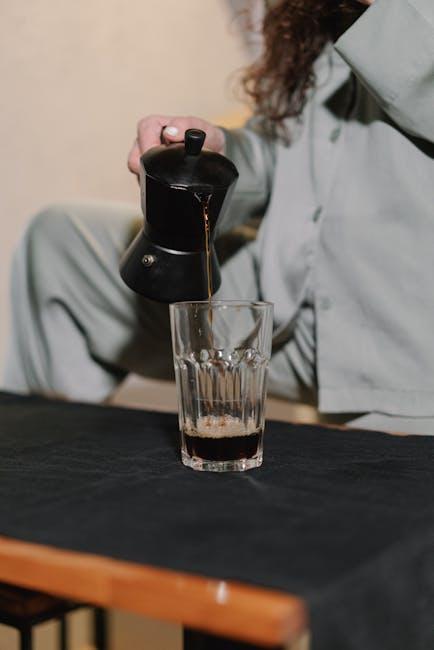In the subtle symphony of daily life, scents play an often unnoticed yet powerful role. From the invigorating burst of citrus that awakens our senses to the calming lavender that soothes us into relaxation, aroma weaves itself into the fabric of our productivity and rest. But beyond mere pleasure, can these fragrant whispers actually signal and influence our states of focus and respite? Exploring the intimate connection between smell and mindset reveals how certain aromas serve as olfactory cues, guiding our brains toward moments of intense concentration or peaceful reprieve. This delicate interplay between scent and state offers a fascinating perspective on how the invisible power of aroma shapes the rhythms of work and relaxation.
The Science Behind Scents and Brain Activity

When we inhale a scent, molecules travel directly to the olfactory bulb-part of the brain’s limbic system, which governs emotions and memory. This unique pathway makes aromas powerful triggers for cognitive states. For instance, stimulating aromas like peppermint and citrus often activate the brain’s alertness centers, encouraging focus and energy. Conversely, calming scents such as lavender and chamomile engage neurotransmitters tied to relaxation, signaling the body to downshift into a restorative mode. This spontaneous communication between scent molecules and brain activity offers a non-invasive method to subtly influence mental states without conscious effort.
Recent studies have highlighted how distinct aroma compounds correlate with specific brainwave patterns:
- Alpha waves: Elevated by lavender, linked to calm, wakeful relaxation
- Beta waves: Stimulated by peppermint, associated with active thinking and alertness
- Theta waves: Enhanced by sandalwood, connected to deep meditation and restfulness
| Aroma | Primary Brainwave Influence | Effect |
|---|---|---|
| Rosemary | Beta | Improved concentration |
| Vanilla | Alpha | Soothing calm |
| Chamomile | Theta | Deep relaxation |
By understanding these connections, we can strategically utilize scents to tailor environments that nurture productivity or rest, harnessing the brain’s innate responsiveness to aroma stimuli.
Harnessing Aromas to Boost Focus and Efficiency

Incorporating specific scents into your workspace can act as a powerful cue, signaling your brain to shift into a state of heightened concentration. Aromas like peppermint and rosemary are known to invigorate the senses, sharpening mental clarity and sustaining alertness during demanding tasks. When these fragrances fill the air, they create an unconscious association with productivity, gently nudging you to maintain focus and efficiency without feeling forced.
To effectively employ these aromas, consider establishing a ritual that differentiates work time from rest. A simple diffuser or essential oil blend can mark the start of your productivity session, while another, more calming scent like lavender or chamomile can indicate the switch to downtime. Below is a suggested pairing to help you curate a balanced aromatic environment:
- Focus Boosters: Peppermint, Rosemary, Lemon
- Rest & Relaxation: Lavender, Chamomile, Bergamot
| Aroma | Effect | Best Use Time |
|---|---|---|
| Peppermint | Enhances alertness | Morning & work hours |
| Rosemary | Improves memory | Midday sessions |
| Lavender | Promotes calm | Evening & breaks |
Creating a Restful Environment Through Fragrance

Crafting an atmosphere that encourages relaxation begins with selecting the right scents to gently ease the mind and body into tranquility. Floral and herbal fragrances like lavender, chamomile, and eucalyptus are beloved for their calming properties, helping to reduce stress and promote restful sleep. Consider diffusing these aromas during the evening hours or whenever a peaceful pause is needed during a busy day. Their subtle presence can transform a space into a sanctuary, inviting moments of mindful breathing and quiet reflection that rejuvenate the spirit.
To further enhance this serene environment, integrate soft lighting and comfortable textures that complement the calming scent profile. Using an organized approach, you can create a ritual around these fragrances, signaling to your brain when it’s time to unwind. Here are some key elements to include:
- Natural Essential Oils: Opt for pure extracts like sandalwood or jasmine for authenticity.
- Reliable Diffusers: Use ultrasonic diffusers for even scent distribution without heat damage.
- Timed Sessions: Set diffusers to run for 30-60 minutes to avoid overwhelming the senses.
- Complementary Textures: Introduce cozy blankets and pillows to enhance physical comfort.
| Fragrance | Effect | Ideal Time |
|---|---|---|
| Lavender | Calming, sleep aid | Evening |
| Chamomile | Stress relief | Midday break |
| Eucalyptus | Respiratory ease, relaxation | Nighttime |
Practical Tips for Using Aromatherapy in Daily Routines

Incorporating essential oils into your daily routine can subtly cue your brain to switch between productivity and relaxation modes. Start your morning with invigorating scents like peppermint or lemon, which are known to boost concentration and energize the mind. Simply adding a few drops to a diffuser or mixing with a carrier oil for a quick wrist rub can create a focused ambiance as you dive into work tasks. For a natural rhythm, designate specific aromas for different parts of your day-this olfactory scheduling helps form a sensory association, making it easier to transition mentally between activities.
When it’s time to unwind, switch to calming fragrances such as lavender or chamomile, which signal rest and reduce stress levels. Carry small aroma sticks or use a bedside diffuser for these scents to reinforce the relaxation message to your brain. Here’s a quick guide for easy application:
- Morning Boost: Diffuse citrus or peppermint oils; apply to pulse points for alertness.
- Midday Focus: Use rosemary or eucalyptus to maintain concentration.
- Evening Calm: Sprinkle lavender or sandalwood near your pillow; try a warm bath with essential oils.
| Time of Day | Aroma | Effect | Application |
|---|---|---|---|
| Morning | Peppermint | Boosts energy and focus | Diffuser, pulse points |
| Afternoon | Rosemary | Enhances concentration | Room spray, wrist rub |
| Evening | Lavender | Promotes relaxation | Diffuser, bath soak |
In Conclusion
In the subtle dance between scent and sensation, aromas emerge as silent guides-nudging us toward focus or inviting us to unwind. Whether it’s the invigorating burst of citrus that sparks productivity or the calming embrace of lavender that signals rest, our noses hold the key to a nuanced sensory language. By tuning into these fragrant cues, we can craft environments that align with our daily rhythms, transforming the invisible trails of scent into powerful tools for balance and wellbeing. In the end, aroma is more than just a background note-it’s an eloquent messenger whispering the delicate harmony between action and pause.











